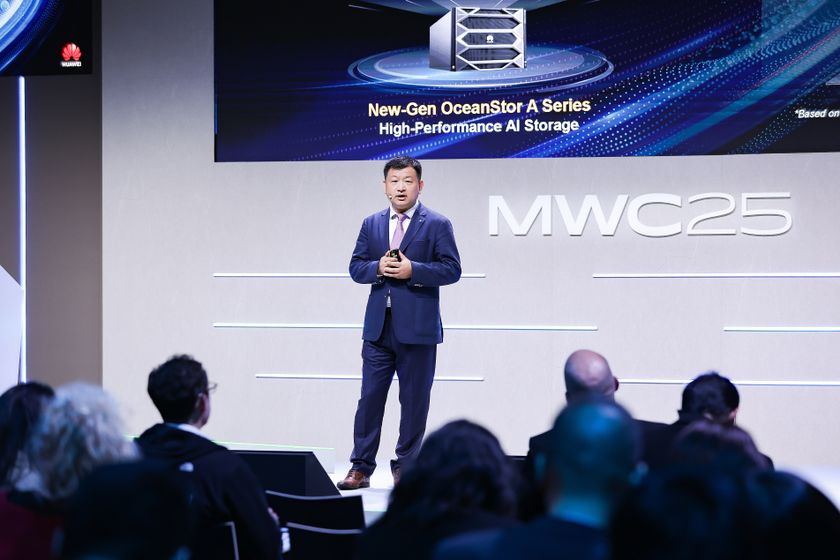What MSP tools can learn from consumer apps
The likes of Facebook and Instagram can offer design lessons to better-engage customers with enterprise tools

Making enterprise apps more like consumer apps is not a new idea; consumer apps must engage and retain users to survive, and enterprise apps can follow their lead for better user experience (UX).
The lessons aren't always obvious, especially when it comes to mobile apps. Some are designed to steal attention, rather than offer a pleasing user interface (UI,) with the overall aim often centring on selling advertising. The UX just happens to be a neat way to sell that advertising space.
But not all consumer apps work this way. Social media apps, such as Facebook, offer a slick UI designed to keep you on the network which, in turn, heightens engagement. This means Facebook has more data it can use to better target its advertising.
A friendly UX, with users offered intuitive choices, can be used to improve enterprise apps by increasing usage, cutting down on user error, and increasing productivity. But what about MSP tools? These are used by IT experts likely to value speed and simplicity over a fancy UI; more GitHub than Instagram.
So what can developers learn from how consumer apps engage their users?
Lessons to learn
MSP employees span generations and varying levels of experience. Those from Generation X or older who grew up with DOS prompts and BASIC programming will be more comfortable in the command line. Younger staff will likely have less experience with a text-only environment, with WIMP interfaces the norm. But both are happy to use a well-designed interface that makes their jobs easier.
This is the key lesson to learn from consumer apps - people want the tools they use to make basic, repetitive tasks easy, and provide support with more involved tasks, not to fight against them. Consumer apps exist in a marketplace in which they're competing against rivals and must keep their users engaged. Developers of MSP tools may not be in such a battle, but should still use the same lessons to make the UX more engaging.
Channel Pro Newsletter
Stay up to date with the latest Channel industry news and analysis with our twice-weekly newsletter
The UI of many consumer apps has gone through multiple iterations, making them simpler and more satisfying to use with time. Smartphone design was a race to get rid of as many physical buttons as possible, thus creating a universal experience regardless of the app used. Data collected from all of the button presses and swipes on screens has also given designers an excellent idea of how people interact with systems, and what serves them best. Designers can use this data to create something engaging, no matter the audience.
With MSP tools, much can be achieved through simplicity and customisability. Not all information is always important; for example, being able to show only the endpoints that need to be patched would be extremely valuable to the user. Having to find this information in a sea of irrelevant detail makes for a poor UX.
Customisable options can also create a better experience. Just as Amazon and other shopping sites give users a choice in how stock is presented, such as the full details or a more compact view, MSP tools can do the same. Giving users full control, including the choice of interacting using a command line, mouse clicks or even touch screen, will mean they can choose an experience that works for them.
Consumer outrage also serves as a valuable lesson. While people do fear change, these objections settle over time. The use of 'algorithmic timelines' on Twitter, Facebook, and Instagram still cause complaints, however. The idea is to provide people with more of what they may want, rather than a chronological series of posts. It also helps advertisers target audiences. But it turns out that many do actually want to see everything in their timeline, in the order that it happened.
That's not to say algorithms are bad. Much as Amazon throws up suggestions based on recent purchases, MSP tools could offer suggestions too. Someone searching for disk errors may also want to know the physical location of these disks. A user performing the same task over and over again may appreciate more information on automation tools available to them. What's important here is to balance wants and needs. Your innovation may be incredibly useful, but only if people want it.
Lessons already learned
Blinking text and animated 'under construction' gifs were popular in the early days of the internet, but have been long consigned to the bin. What may be popular today could be the 'blinking text' of tomorrow, and it's important to avoid being caught up in fads and fashions when designing UIs.
Today it's common to give users a simple, clean interface - lots of white space and a single point of focus. Instagram has a simple feed of images from friends. Tumblr gives you a single post to like or reshare. Medium displays a single article with few distractions, keeping its recommendations until the end. These focused experiences are great for the consumer, giving them what they want with no distractions.
But these kinds of single-serving experiences can be frustrating for those who want to multitask, and refer to more than one source of data. Using MSP software is often about more than binary decisions, with troubleshooting requiring multiple data sets to solve. Some alerts and information may benefit from stripped-back simplicity.
Giving the user more control
Consumer apps are, by necessity, in the UX vanguard. If consumers aren't engaged, the sheer number of alternatives will tempt them away. Enterprise apps are different, as the user tends to be locked-in through buying decisions made elsewhere, with businesses generally deciding to switch less often, because it tends to be costlier. Switching MSP tools can be an even bigger decision for an MSP, as much of the business offering will be built around these tools. That's why a good UX is so important. MSPs need to be able to use their tools with minimum fuss - and that means an interface that tailored to their needs, rather than just designed to catch the eye and hold attention.
The key to this is configurability. No two users are the same, with the exact same needs. With consumer apps, this can be simplified to give a pretty good experience for everyone, but MSP tools need to be able to give the user exactly what they want - making the ability to choose a UX far more valuable than slick menus, modern icons in muted colours, or 3D effects.
People want to configure the things they interact with the most, whether digital or not, just as they decorate their homes in the colours they want, and add trinkets or family photos to their work desks. The same principle applies to the tools they use every day - except it's a matter of necessity rather than idiosyncrasy. The wide array of customers that MSPs serve means every MSP, and every user, will engage with a tool in a slightly different way. Forcing users to engage with a tool in a specific way might mean they end up resenting it; by making it configurable, however, users will end up with their own unique tool that works just the way they want.
Dave Sobel is senior director, MSP Evangelism with SolarWinds
















